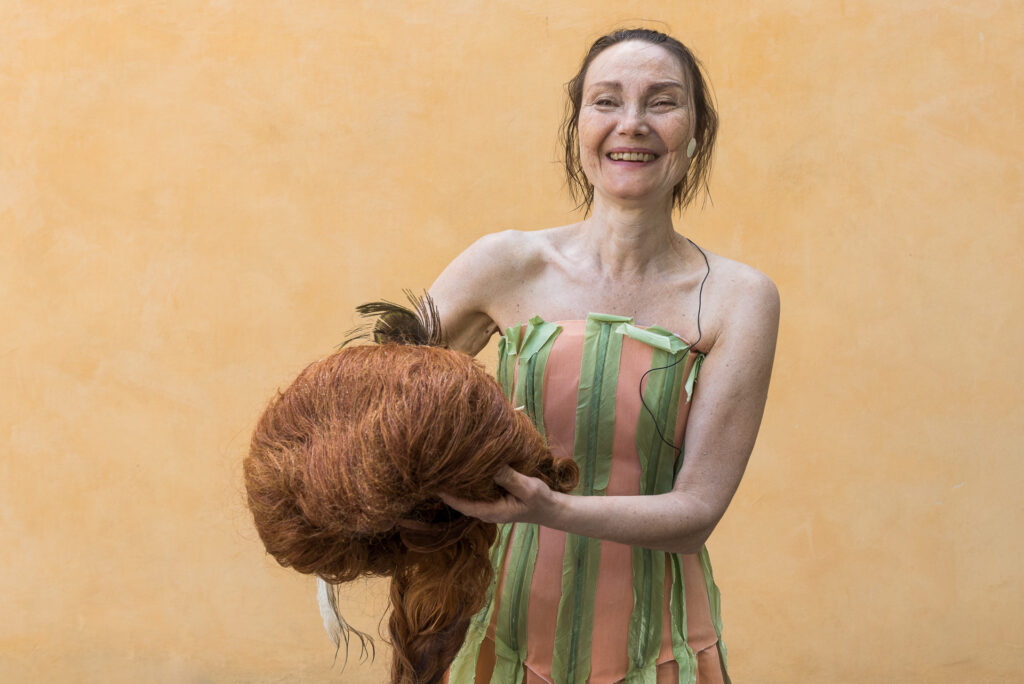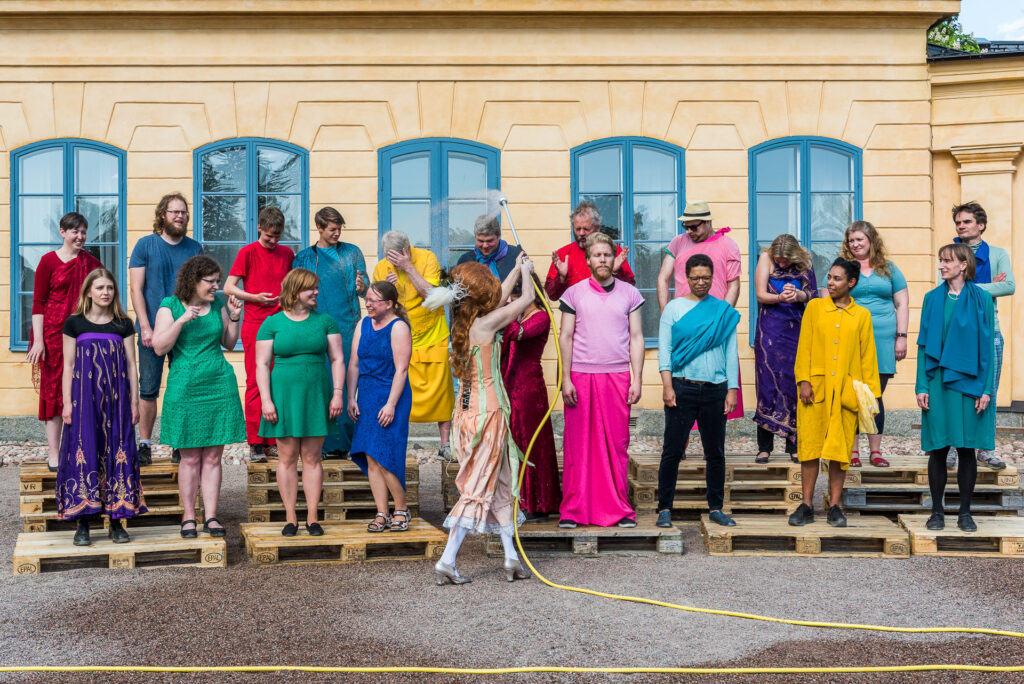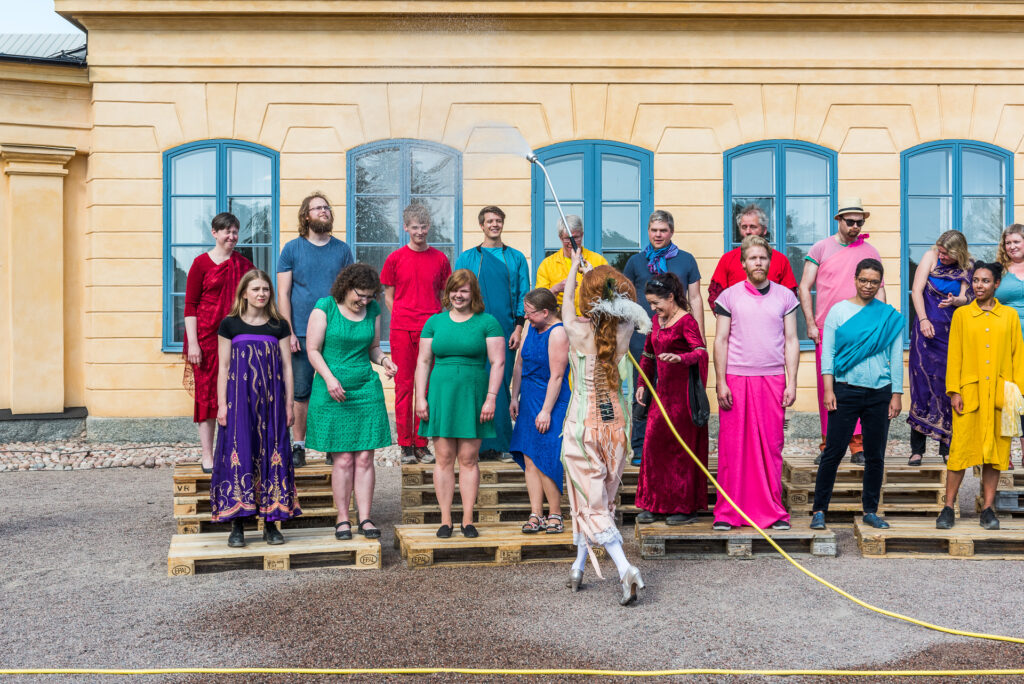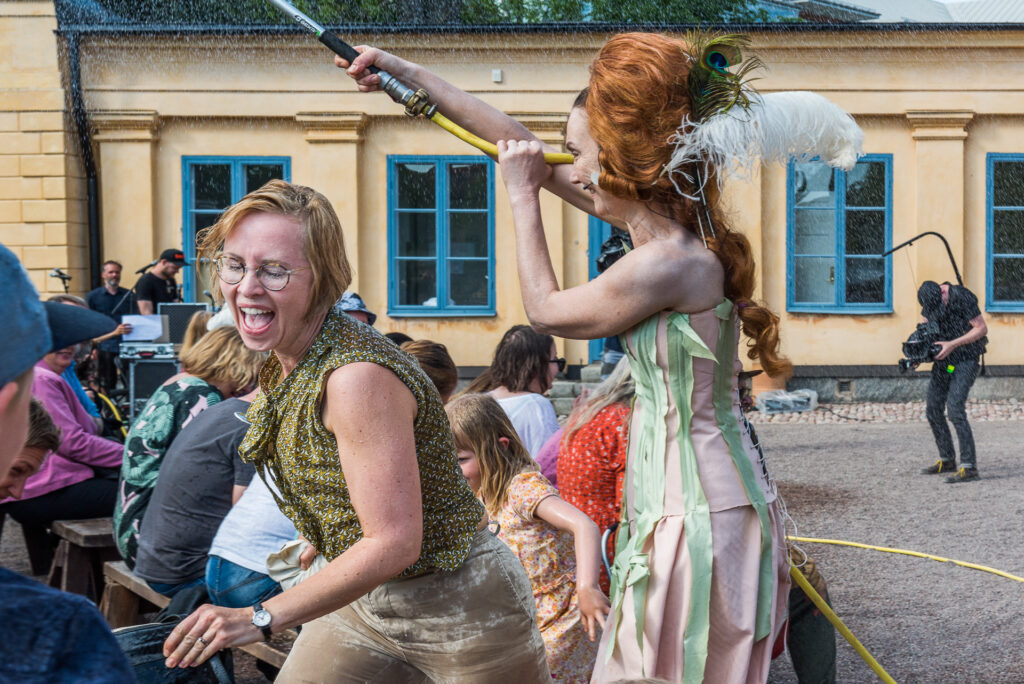A DREAM OF LINNAEUS’ DAUGHTER
2018
________________________________________________________________________________________________________________________________________________________________________________
TECHNICAL DETAILS
Single channel video (colour), loop, 16:9 PAL, 28’42”, audio.
________________________________________________________________________________________________________________________________________________________________________________
- Sen Córki Linneusza. photo: Kasia Szumska
- Sen Córki Linneusza. photo: Kasia Szumska
________________________________________________________________________________________________________________________________________________________________________________
DEMO
________________________________________________________________________________________________________________________________________________________________________________
DESCRIPTION
Kozyra follows Haraway’s path in proposing a new symbiosis between humans and animals. She approaches this topic from the perspective of radical feminism, as did Haraway, whose last manifesto The Companion Species Manifesto: Dogs, People, and Significant Otherness, devoted to human-canine relations, openly states that writing about dogs is for her a form of feminist theory. Also for Kozyra the notions of Culture and Nature are not necessarily a binary opposition. In photographs from the series “Homo Quadrupeds” naked men are led on a leash by burqa-clad women who tame their instincts. This is a reference to the legend of unicorn, in which only a virgin could tame the wild animal. While the women meet during the walk, the dogs sniff each other and seek to dominate. It is no longer only a matter of freeing women from male domination, as in the performance Aus der Mappe der Hündigkeit (From the Portfolio of Doggishness, 1968) by VALIE EXPORT and Peter Weibel, in which Weibel obediently waddled at the artist’s side. Kozyra expands the feminist approach with a political aspect: the dogs in her work, played by Arabs and Americans, are aggressive and ready to jump down each other’s throats any minute. Kozyra might therefore have more in common with Oleg Kulik, who attacks the establishment in his performances as a dog (literally!), but also dreams of a non-anthropocentric, ecological society and fights for democracy.
Kozyra expanded the borders of humanity to include other species already in her earliest works, such as the Polaroid series Karaski in Beef or her diploma piece Pyramid of Animals, inspired by the fairytale Town Musicians of Bremen by the Brothers Grimm, which consisted of stuffed animals: horse, dog, cat and rooster, accompanied by a horse slaughter film footage. At the time of its making, the piece stirred up an unprecedented scandal in the media, which turned it into the most famous artwork of the last quarter of the century and a symbol of critical art. Notably, Kozyra was creating that piece by herself, balancing on the border between life and death while struggling with cancer.
Insofar as her early works called for human morality with regard to animals, Kozyra now shows that the human being is an animal species, or in other words, a sociological chimera – doomed to co-exist with other creatures – which Haraway may have had on her mind while writing her Cyborg Manifesto. In order to survive, like every other species, they must therefore adapt to external condition: create a new society.
________________________________________________________________________________________________________________________________________________________________________________
- Sen Córki Linneusza. photo: Kasia Szumska
- Sen Córki Linneusza. photo: Kasia Szumska
________________________________________________________________________________________________________________________________________________________________________________
Katarzyna Kozyra acts as Elisabeth Christina von Linné, one of Linnaeus’ five daughters, an exceptionally talented figure forgotten by history, who as a woman could never take up studies, but still followed the steps of her father and became a botanist. In the gaze of Elisabeth Christina, the world is conceived in a dreamlike shimmer. The scientific writings of the father The Systema Naturae, is viewed in a distorting mirror, in a new system where the hierarchical classification of the species is reconsidered. Elisabeth Christina illustrates this peaceful revolt by conducting a choir singing Ludwig van Beethoven’s famous Ode to Joy (the Anthem of the European Union) by different animal sounds. And arranging an “Ark” of EU-pallets. Harmony, dis-harmony and noise are suddenly ended by an allegorical deluge, hinting at the climate threat and death of species.
The video art work is acquired to the Uppsala Art Museum´s art collections and was recorded in the Linnaean gardens during the international festival Revolve Performance Art Days and the annual Linnaean garden party together with the Uppsala audience in May 2018. The park itself is organized to illustrate the taxonomical system of Linnaeus. Kozyra who often relates to the spectacular aesthetics of the baroque opera, also explores the social interaction as part of the performance and art-event. The recurrent use of the artists´ persona to create performative situations, with the audience as co-creator, was underlined in the former exhibition Identity Bending, at Uppsala Art Museum in 2018. Men´s Bathhouse, Olympia, Il Castrato or Looking for Jesus. The time gap from the graduation work in 1993 in a post-communist Poland until todays Europe where right wing and conservative ideas are openly expressed, the films EU-hymn may illustrate the shaky road of today’s Europe.
Rebecka Wigh Abrahamsson
curator of the A Dream of Linnaeus´ Daughter
at Uppsala Art Museum
________________________________________________________________________________________________________________________________________________________________________________
- Sen Córki Linneusza. photo: Kasia Szumska
________________________________________________________________________________________________________________________________________________________________________________
ADDITIONAL INFORMATION
- The video art work was recorded in the Linnaean gardens during the international festival Revolve Performance Art Days and the annual Linnaean garden party together with the Uppsala audience in May 2018.
- The video is acquired to the Uppsala Art Museum´s art collections.
- A Dream of Linnaeus´ Daughter premiered at the ŻAK | BRANICKA Gallery in 2018.
- ________________________________________________________________________________________________________________________________________________________________________________
SEE MORE





